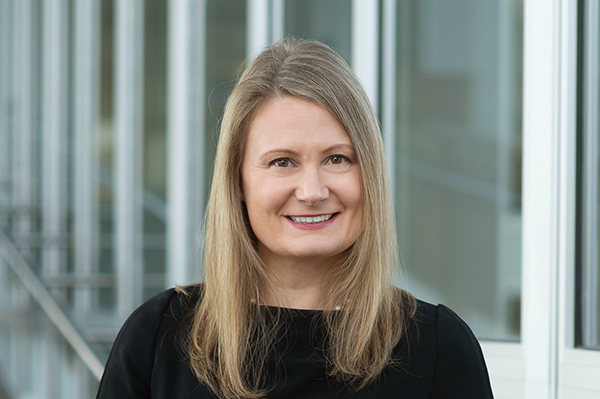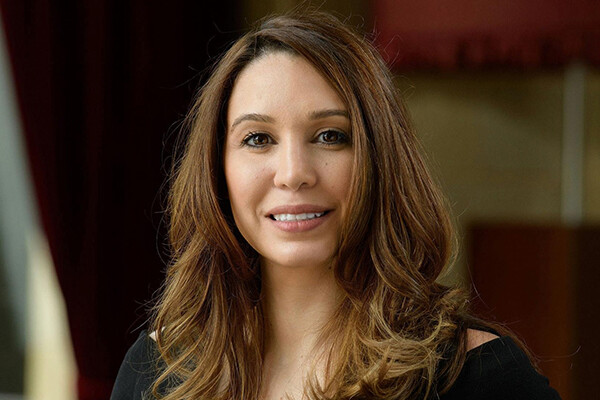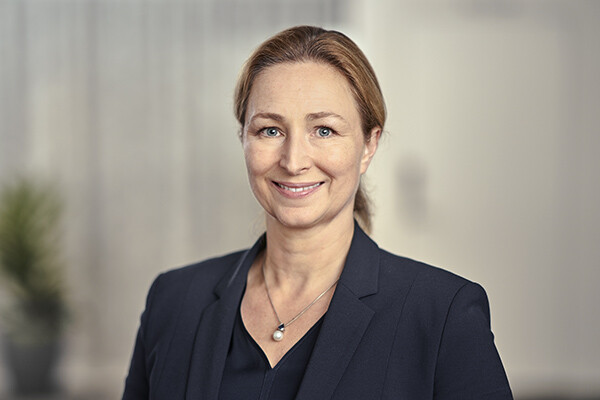
This blog series celebrates the remarkable women leaders who play a pivotal role in shaping Securitas into the company it is today. As part of this series, we're shining a light on the women who are breaking barriers and leading the way across our organization. Through their stories and professional journeys, you can gain valuable insights into life at Securitas, learn from their experiences, and uncover the tips and lessons they've gained along the way.
In this edition, meet Sabrina Stainburn, president of Securitas Technology Europe. Sabrina is responsible for implementing the global technology strategy, building out the Securitas Technology organization, and overseeing all Securitas Technology operations across Europe.
Along with her formal responsibilities, Sabrina says it’s her duty – and the duty of others in leadership positions – to bring their true authentic selves to work every day.
“Many women start their leadership career emulating men or male styles simply because they have not had the benefit of having a woman role model. This is especially true in a male-dominated industry like ours,” she says. “By being our authentic selves at work rather than emulating someone else’s leadership style, we enable other women to see that they do not have to fit into a specific mold to be successful.”
Continue reading for the full interview with Sabrina.
Q&A with Sabrina Stainburn
What led you to the security industry?
I came to work in the electronic security industry by accident. I was managing indoor air quality products at Honeywell, which included a small line of carbon monoxide detectors; that experience led me to join a startup in New York that patented a design to shut off HVAC equipment during a carbon monoxide alarm event. While working for that startup, I met someone from a global security company who took an interest in my life safety background and recruited me.
I have spent nearly 18 years in the industry now, which has allowed me to understand the market and what drives clients to make their electronic security decisions. I am proud to work in an industry that has a mission to protect people.
Describe your leadership style.
I would describe my leadership style as collaborative. I strive to empower my team and foster an environment where people can best use their strengths. I believe in leading by example and maintaining a positive and inclusive work culture. While I am decisive when needed, I value input from team members. I am always open to listening to people and willing to change my mind. In fact, when I change my mind about something, it is a good thing because it is a sign that I have learned something new!
How do you help other women to lead?
I think it is critical for women to support each other, and some of the most effective ways I have found to do so are by being a mentor and more importantly by being an advocate for other women. This means not only being supportive of women when in the same meeting but also being supportive of women when they are not present. In addition, I try to introduce great women to one another to facilitate networking. We have some really amazing women in the industry but without support, it’s easy for them to get overlooked.
How can the security industry become more inclusive for women leaders?
This is a hard question to answer because we are, as an industry, so far from being inclusive of women. We are still very male-dominated and unfortunately, many talented women are driven away from the industry as a result.
Unconscious bias training can be helpful to hire and promote more women. We are all likely to hire people in our image because we are confident in our success and therefore see it in others that remind us of ourselves. This is a hard cycle to break, but with proper training and attention, we can break it.
There are many studies that demonstrate a strong link between diversity in an organization and its success, so it’s a win-win. The inclusion part comes when we promote the visibility of women leaders, not just those with management responsibilities, but women who lead in their respective fields.
Judging people through their performance KPIs rather than through subjective means can have a big impact on retention, as we know some skills in men – such as leadership, for example – can be seen as bossy/negative when displayed in women.
In my last role, I started a women’s leadership network, which was an informal forum for high-potential women to share struggles, ask for advice, and get mentorship. I am very proud to say that it led to many promotions. I intend to start a similar group here at Securitas Technology called Women in Technology – Europe.
What would you say is the responsibility of women in leadership positions?
I think the biggest responsibility of women in leadership positions is to bring their true authentic selves to work every day. Many women start their leadership career emulating men or male styles simply because they have not had the benefit of having a woman role model. This is especially true in a male-dominated industry like ours. I, for example have never worked for a woman and since the start of my P&L management career, I have never had a woman peer. By being our authentic selves at work rather than emulating someone else’s leadership style, we enable other women to see that they do not have to fit into a specific mold to be successful.
Do leaders need a role model? Who is/was yours?
I do not think leaders need a specific role model; many people take the best parts of those they’ve met along the way and use that as an influence, particularly women who perhaps haven’t been exposed to many other women leaders. One person I take a lot of inspiration from is Indra Nooyi, the former CEO of PepsiCo. I admire her leadership style – she is tough but leads through diplomacy and effective stakeholder engagement. She knows people will work harder on something they believe in than they will on something they are forced to do.





